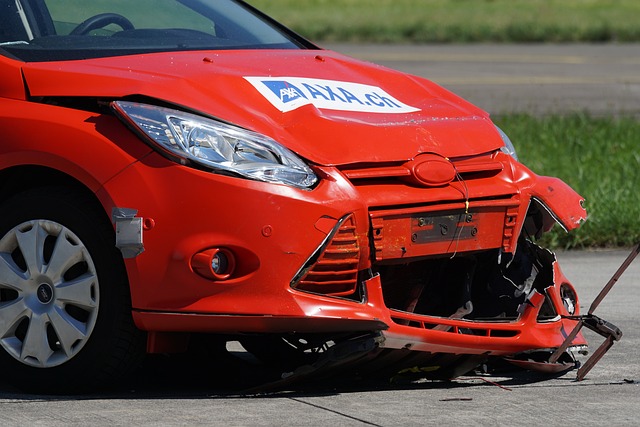Full-service liability insurance is a comprehensive solution for drivers, offering financial protection against accidents, injuries, and property damage. It includes services like roadside assistance and legal defense, ensuring peace of mind. Liability insurance is crucial in many jurisdictions as a legal requirement and safety net. Key types include Bodily Injury, Property Damage, and Combined Single Limit. Drivers should assess their needs, review policies, and stay informed due to changing technologies and consumer expectations, especially with the rise of ride-sharing and autonomous vehicles.
In today’s world, understanding full-service liability for drivers is more crucial than ever. This comprehensive guide delves into the intricacies of liability insurance, a vital shield for motorists facing unforeseen accidents and legal repercussions. We explore diverse coverage options, their benefits, and how to select the perfect plan. Learn from common mistakes and discover real-world scenarios where robust liability insurance becomes a game-changer. Plus, we peek into the future of this essential protection.
Understanding Full-Service Liability for Drivers

Full-Service Liability for Drivers refers to a comprehensive insurance coverage designed to protect drivers from financial burdens associated with accidents or other unforeseen events while behind the wheel. This type of liability insurance is crucial, as it not only covers damage to property and injuries to others but also provides legal defense costs in case of lawsuits. It’s important to understand that full-service liability goes beyond basic coverage, offering a range of services that can include emergency roadside assistance, legal counsel, and even rental car coverage during repairs, ensuring drivers are fully supported in the event of an incident.
This comprehensive approach is especially beneficial for professional drivers who log many miles annually or those navigating complex urban environments with high traffic densities. By subscribing to full-service liability, drivers can have peace of mind knowing they are protected not just financially but also through a suite of supportive services that can make the difference in challenging situations.
The Role of Liability Insurance in Protecting Drivers

Liability insurance plays a pivotal role in safeguarding drivers from potential financial burdens associated with accidents or incidents on the road. In many jurisdictions, it’s not just a legal requirement but also a crucial shield for drivers. This insurance covers damages that may arise due to negligence, such as medical expenses, property damage, and legal fees, providing peace of mind knowing that unexpected events won’t bankrupt individuals in case of an accident.
Additionally, liability insurance encourages safe driving habits. Drivers are more inclined to adhere to traffic rules and regulations when they understand the consequences of their actions could be mitigated by their insurance policy. This proactive approach not only ensures the safety of all road users but also fosters a culture of responsible driving.
Different Types of Coverage and Their Benefits

Liability insurance is a crucial aspect of full-service coverage for drivers, offering protection against potential risks and financial losses on the road. This type of insurance plays a vital role in mitigating the driver’s liability in case of accidents or damages caused to others. There are several types of liability coverage available, each with distinct benefits:
1. Bodily Injury Liability: This coverage protects drivers from claims related to injuries sustained by others in an accident. It ensures that medical expenses and legal costs associated with such incidents are covered, providing peace of mind behind the wheel.
2. Property Damage Liability: Drivers can safeguard themselves against financial responsibility for damage caused to others’ property, such as vehicles or structures, through this type of insurance. It helps manage potential lawsuits and repair costs, ensuring drivers are not left vulnerable in the event of an accident causing property damage.
3. Combined Single Limit: Offering comprehensive protection, this coverage combines bodily injury and property damage liability into a single limit. It provides a broad spectrum of financial security for drivers, making it a popular choice for those seeking all-encompassing liability insurance.
How to Choose the Right Liability Insurance Plan

When selecting a liability insurance plan, drivers must consider their individual needs and risk profile. This includes evaluating factors like driving history, vehicle type, and personal financial situation. A comprehensive assessment ensures that the chosen coverage aligns with potential liabilities, offering adequate protection while avoiding unnecessary expenses.
Opting for the right plan involves exploring different policy options, comparing premiums, and understanding what’s included in each. Drivers should scrutinize exclusions, deductibles, and coverage limits to make informed decisions. It’s also beneficial to consult with insurance professionals who can provide guidance tailored to specific circumstances, ultimately facilitating a well-informed choice that safeguards against financial risks associated with full-service liability.
Common Mistakes Drivers Make When Purchasing Liability Insurance

Many drivers often overlook the intricacies of their liability insurance, leading to common mistakes that can leave them underinsured or misunderstood in the event of an accident. One of the primary blunders is assuming that all policies are created equal; every provider offers different coverage levels and exclusions. Drivers should thoroughly research and compare policies, keeping an eye out for potential loopholes or inadequate coverage limits. For instance, some policies might exclude specific activities like racing or driving under the influence, which could leave a driver vulnerable in unforeseen circumstances.
Additionally, drivers may not realize the importance of regular policy reviews. Life changes, such as purchasing a new vehicle, moving to a different area, or acquiring more assets, demand adjustments to insurance plans. Failing to update liability insurance accordingly can result in insufficient coverage when it’s needed most. Staying informed and flexible with one’s insurance plan is key to mitigating risks effectively.
Real-World Scenarios: When Full-Service Liability is Crucial

In today’s digital era, with ride-sharing services becoming increasingly popular, understanding full-service liability is more crucial than ever for drivers. Real-world scenarios often go beyond the typical pick-up and drop-off routines; drivers may find themselves in situations where they need comprehensive protection. For instance, a driver might be involved in an accident while waiting for a passenger or during a non-trip related incident, such as a collision with another vehicle or property damage caused by their vehicle. In these cases, having full-service liability insurance ensures that the driver is covered beyond the standard trip-related risks.
This type of insurance provides peace of mind by covering potential legal fees, medical expenses, and damages incurred in various scenarios. It’s essential for drivers to realize that Liability Insurance isn’t just about protecting them during trips; it also safeguards them in daily operations related to their vehicle, including maintenance checks, personal use, and unexpected events. This comprehensive approach ensures that drivers are fully protected in every aspect of their professional and personal responsibilities behind the wheel.
The Future of Full-Service Liability for Drivers

The future of full-service liability for drivers is an evolving landscape shaped by technological advancements and shifting consumer expectations. As autonomous vehicles gain traction, Liability Insurance policies will need to adapt to cover new risks associated with driverless operations. This shift includes addressing issues like remote control, artificial intelligence decision-making, and the complex interplay between human and machine drivers.
Companies offering full-service liability solutions must also integrate data analytics and real-time tracking to predict and mitigate risks more effectively. By leveraging telematics and advanced driver behavior analysis, insurers can offer personalized policies that reflect individual driving patterns and habits. This future promises enhanced safety through proactive risk management, but it also presents challenges in terms of regulatory compliance, data privacy, and the need for innovative insurance models.
